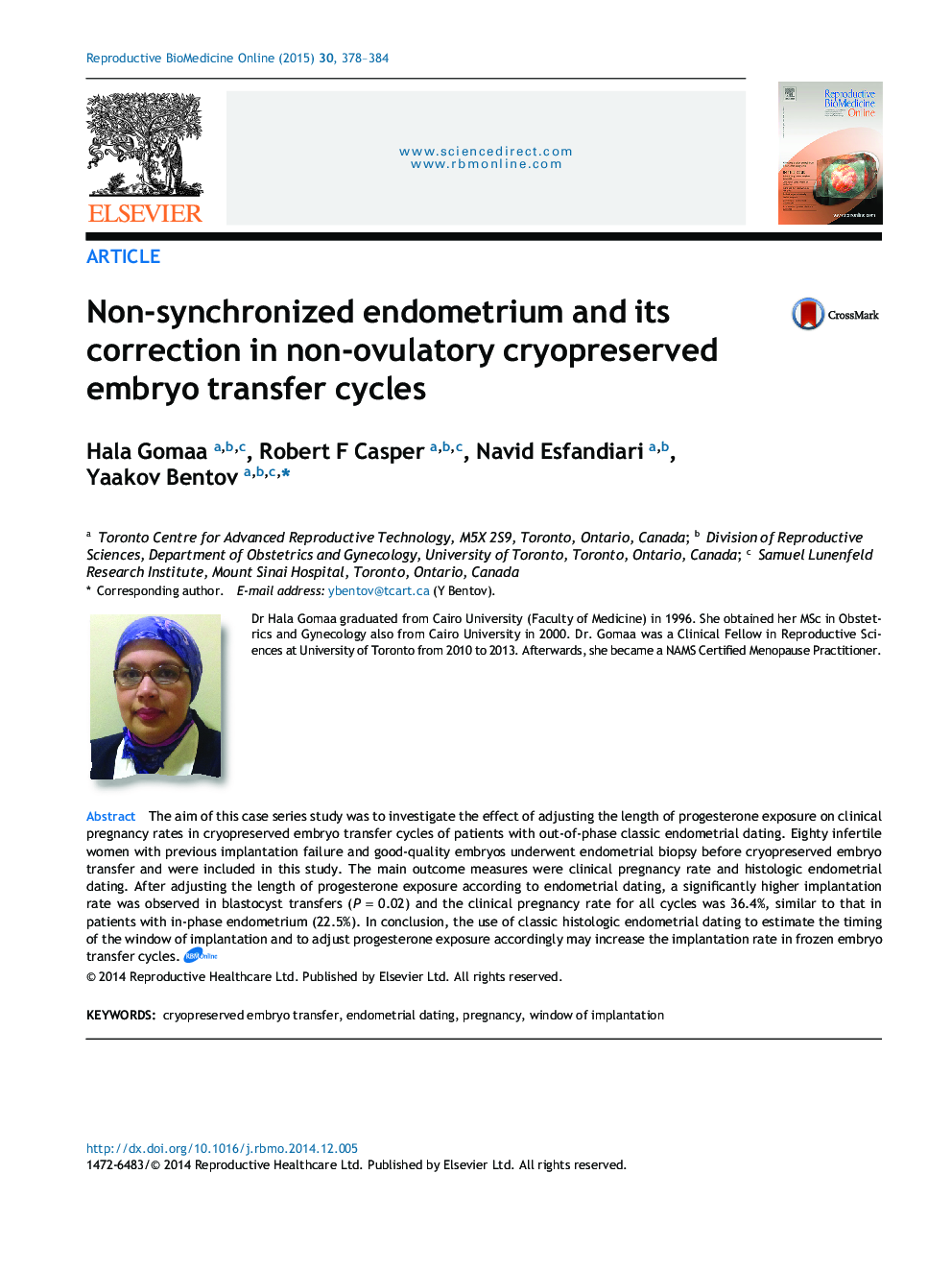| Article ID | Journal | Published Year | Pages | File Type |
|---|---|---|---|---|
| 3970083 | Reproductive BioMedicine Online | 2015 | 7 Pages |
The aim of this case series study was to investigate the effect of adjusting the length of progesterone exposure on clinical pregnancy rates in cryopreserved embryo transfer cycles of patients with out-of-phase classic endometrial dating. Eighty infertile women with previous implantation failure and good-quality embryos underwent endometrial biopsy before cryopreserved embryo transfer and were included in this study. The main outcome measures were clinical pregnancy rate and histologic endometrial dating. After adjusting the length of progesterone exposure according to endometrial dating, a significantly higher implantation rate was observed in blastocyst transfers (P = 0.02) and the clinical pregnancy rate for all cycles was 36.4%, similar to that in patients with in-phase endometrium (22.5%). In conclusion, the use of classic histologic endometrial dating to estimate the timing of the window of implantation and to adjust progesterone exposure accordingly may increase the implantation rate in frozen embryo transfer cycles.
